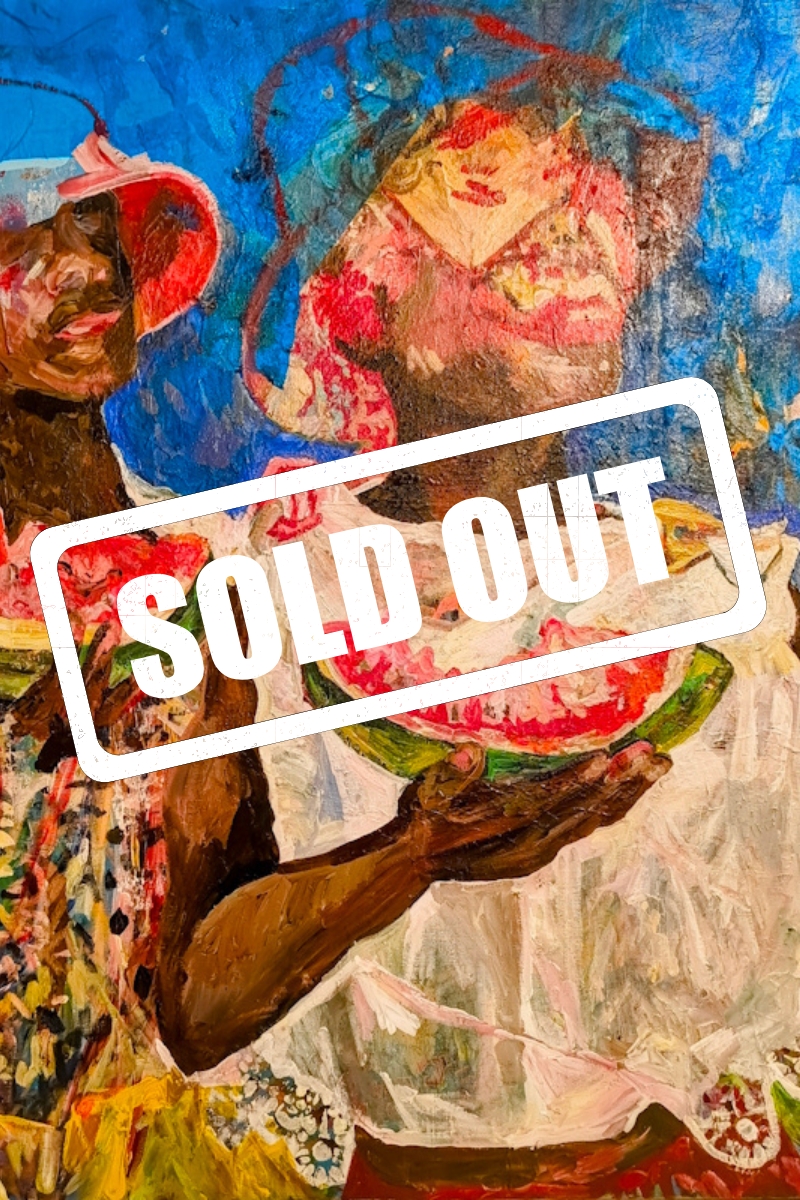

Toasty Melons powerfully juxtaposes the simplicity of a refreshing moment with the weight of historical and social injustice. The two figures, holding slices of watermelon in the heat of the summer, embody a bittersweet reality. While the watermelon represents a symbol of summer’s joys and pleasures, the figures—intentionally rendered without faces—reflect the nameless, faceless lives of those who worked tirelessly in the fields. These individuals, often slaves or marginalized laborers, are deprived of their identity, much like the anonymous workers who harvested the crops in the sweltering heat of the summer.
The vibrant reds and greens of the watermelon, as well as the bright background, contrast with the stark anonymity of the figures, emphasizing the dream of recognition and the longing to be seen. These workers, caught in a cycle of invisibility, dream of becoming someone—of no longer being unknown. While the act of eating watermelon is a symbol of refreshment and escape, for the figures in Toasty Melons, their lives remain far from refreshing, trapped in a system that refuses to acknowledge their humanity.
Through this painting, Vandamme invites reflection on the contrast between fleeting moments of joy and the harsh realities of labor and oppression. Toasty Melons is a poignant commentary on identity, invisibility, and the desire to be recognized for who we truly are.